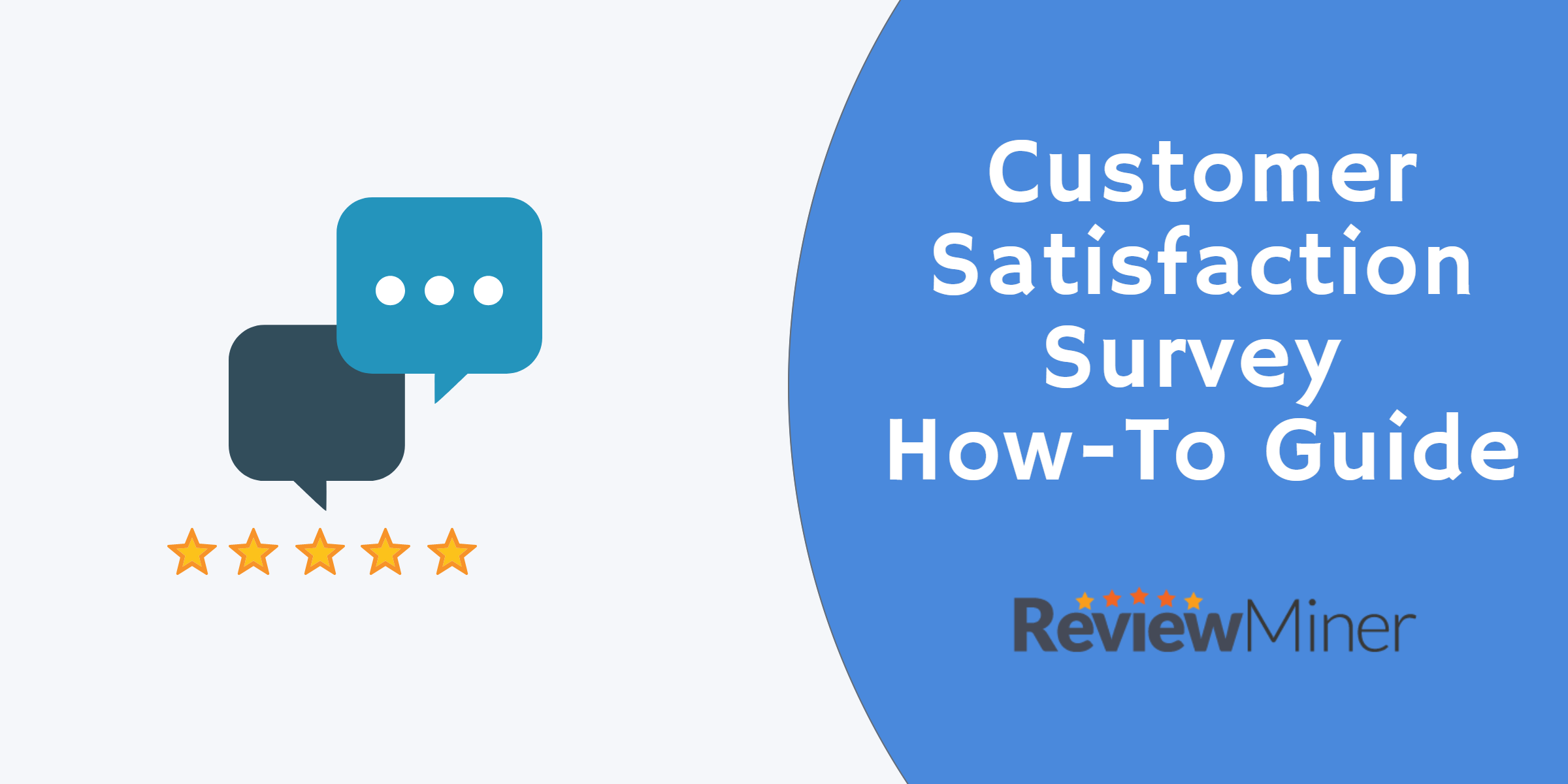
Customer reviews need to be managed as carefully as your business reputation or branding. However, this can be very time consuming. We’ve taken a look at how software can now manage the whole process, from quickly getting a survey online to managing responses, saving a great deal of time and helping your business do better in search rankings. And we also address how to beat customer review fatigue, and get those reviews coming in.
Reviews are a fact of life for businesses today and they’re incredibly helpful in highlighting what the business does well and what needs improvement. But for many businesses, the growing number of social media platforms and the need to curate reviews mean that managing customer reviews is taking up time that would be better spent growing the business.
For smaller businesses, the response is often to stop bothering. They encounter a troll or some negative feedback and fear that the responses are harming the reputation of the business. But it’s possible to manage the whole customer satisfaction survey process, including those trolls, with a minimal investment of time. The business can then benefit from the increased search engine rankings and higher profile that good reviews, and a large number of responses, can bring.
Customer review fatigue is a factor
It sometimes seems that marketing companies live in a different world from the rest of us. In their world, eager customers happily fill in long surveys with positive comments all the way. In fact, as we all know from our personal experience, everyone is completely fed up with review requests that open up lengthy forms, with questions that are either impossible to answer or bear little relevance to the goods or services in question. Unfortunately, this means that more reviews tend to come from those who are dissatisfied and determined to get their grievance heard. So companies are having to raise their game and ensure that their attempts to collect reviews don’t alienate their customers. Some large companies have taken this to the extreme – if you have visited a Boots lately, you’ll have seen the Smiley face / Sad face that customers are asked to tap.
Most businesses want a bit more feedback than that. However, it has to be requested and collected without the customer feeling that their initial goodwill has been exploited. The art of the relevant, focused customer survey, lies in asking the right questions, of the right customer, in the right way. So let’s look at how to do that, and then go on and take a look at how to manage those all-important responses.
Ask the right survey questions
From inadvertently including two queries in a single question to badly phrased questions that are hard to understand, to questions that don’t give you the information you need, the pitfalls of question composition are many.
One of the commonest mistakes, is leading questions. “How much did you enjoy our exceptional service today?” might be an extreme example but subtler versions of this are very common. As are the kind of questions that make a major assumption about the customer: “How many time a week do you eat out?” when perhaps they only do so monthly. Remember too, that people are wary about answering questions that seem too probing.
This is particularly relevant to survey questions that are targeting business users. Many people are happy to fill in a survey but reluctant to disclose information that is clearly being requested for the purposes of making further sales. Inappropriate survey questions can make the customer think that your company is pushy or intrusive.
So unless you have experience in framing questions, it may be better to use a tool that will allow you to construct your own questions if you want to but also provides a template with some standard questions that you can use or customise. If the tool has these kind of features, it can be a surprisingly speedy process to get the survey ready and online – under fifteen minutes.
In order to manage the feedback, you’ll need a bit more functionality in the tool you choose. For one thing, you want the survey to reflect well on your business. So look for software that will provide clean, well-designed templates that result in a survey form that impresses the customer with its professionalism. This is particularly important in the business-to-business context.
The next key thing is to ask the right customers, and for this it’s important that you can use the survey on more than one platform. In the next section, we’ll look at why this matters so much when it comes to reaching your customers.
Everyone’s on Facebook, right?
Only up to a point, Mr. Zuckerberg.
The Daily Telegraph reported in February 2018 that whereas the over 55s are joining Facebook in significant numbers, the social network is facing what the Telegraph dubbed “a teen problem” as younger people leave Facebook to granny and head for cooler networks, primarily Snapchat which is the fastest growing social media site in the UK.
Most Facebook numbers that are quoted online are for the US. In the UK, about half the population is on Facebook. Snapchat, needless to say is making a big push to get more older users by making their platform easier to use. However, one of the key metrics is active use and that is far higher for Facebook than for other platforms, with just over 70% of users logging in daily, whereas for Twitter it’s only a third. And for LinkedIn only just over 10% – mostly on a Monday morning, one suspects. At Twitter, 15% of the accounts make 85% of the tweets – again, something to consider when you look at targeting your customers with review requests.
It all adds up to a constantly evolving social media environment. Anyone running a small or medium sized business is probably at this point wondering how on earth they are meant to keep up with this constantly shifting business landscape. The fact is, that more social networks are certain to emerge. So it’s really not possible for a business to get meaningful customer satisfaction data simply by adding a link to a Facebook page. If your business has most of its customers in the segment of low Facebook users, you’re missing out.
There’s been a huge debate in the marketing world over whether Google does, or does not, use social media engagement to determine page rankings. Google itself has made contradictory statements on the subject and is quite happy to let people guess. It’s hard to be certain, because you can’t run a controlled experiment and more or less anyone who’s big on Facebook will also be big via other internet channels.
But the fact remains that you need to be able to link to several different social networks, and be able to manage them easily if the demographic changes. You may also want to have different customer satisfaction surveys for different segments of your customer base and run these from different social media platforms.
Really, the only practical way to approach this is to use a customer survey management tool and let the people who provide it do the work of sorting out the review process on different sites. That way, the only thing you have to do is to paste in links to the review site.
Managing negative feedback
If you allow people to publish directly onto your website or Facebook page you are an open target for trolls. Where a customer has a legitimate complaint or is less than impressed by the service they received, you need to give yourself a chance to rectify what’s gone wrong and ensure that the customer is happy before they leave feedback. If you use a review management tool it takes the hard work out of this.
How it works, is that when a customer leaves a review on a survey that is being managed, the software checks the score and then takes action according to the score. Best review ever? The happy customer is directed to a thank you page where they’re encouraged to leave feedback. Bad feedback? The customer is directed to a page with contact details so that you can put things right before they start trashing your reputation online. This is extremely useful and possibly marks the emergence of tools for small and medium sized businesses that go beyond simply collecting data and are actually helpful in managing the business.
But the best review management software can take this further, by creating notifications that can be sent straight to members of your team without you having to do the work. These tools can scan review comments for keywords like “service” or “phone” and can actually direct the review to the relevant person on your staff, using criteria that you set up.
Five ways to fight customer review fatigue
Customers are constantly bombarded with requests for reviews. No one can log on to internet banking without being asked to fill in a customer satisfaction survey. Naturally, customers are fed up with being asked. So how can you fight this apathy and ensure you get the good reviews you need?
One way is to use the internet itself to look at places where people are leaving reviews for the type of service or product that you sell. Look at the way they’ve been invited to review and see if you can learn anything from it that you could apply to your own review invitations. Here are some more pointers.
First, don’t just ask at the point of sale or contact. Use different contact times and opportunities, because while a customer may have been too busy to give their views at one point, they may have time to do so on another occasion. Your review manager software should allow you to add a survey link to customer emails. Even better, it may allow you to upload your customer email addresses and let the software do the work of sending out the emails containing the links.
Second, bear in mind how many people are primarily accessing the internet on a mobile. They are not going to write lots about your service or product while strap-hanging on the 5.15 and using the mobile with one hand. Give them easy, click-based responses.
Third, spread the word if it’s good! Good feedback is extremely powerful in influencing buyers to use your business – people trust reviews from other customers. The same goes ten times if your business is a local one. So use the best reviews on your social media pages and website, linked to pictures if possible because that gives them more impact.
Four, tell the reviewer how much of their time and attention you’re going to need – and in general don’t ask for more than two minutes. One minute is better.
Five, be ethical. Don’t offer a reward for a good review – Google for example, doesn’t allow it.
Use a dashboard to monitor your survey effectiveness
If you’re lucky, the tool you used to manage your survey production and responses will also give you an easy to use overview of where you are with everything. What you really need is for everything to be gathered together in one dashboard where you can easily find and track responses. Email is the worst way to try and manage information, so a decent dashboard will make a great difference and save you a lot of time.
Many SMEs target a broad demographic and segment their market in other ways, for example by what kind of product or service the user is buying. But a dashboard can provide you with very valuable information about your customers and the level of satisfaction they have with what they’ve bought.
They may even tell you what they thought of your survey!


